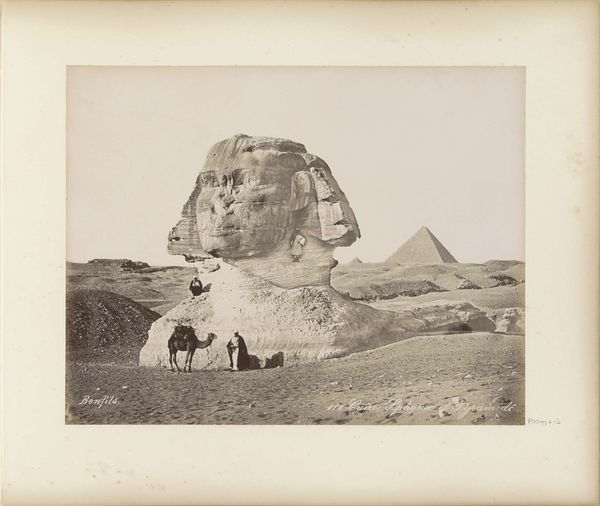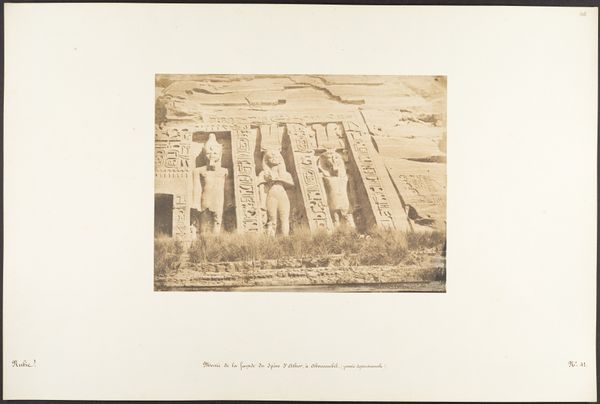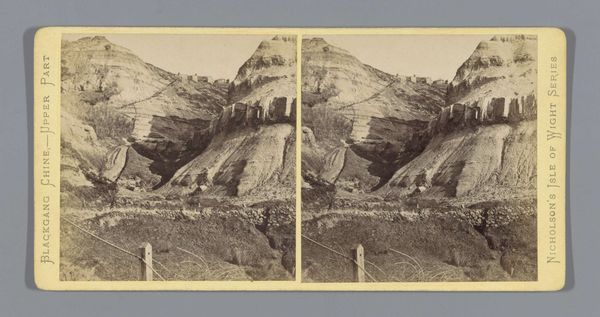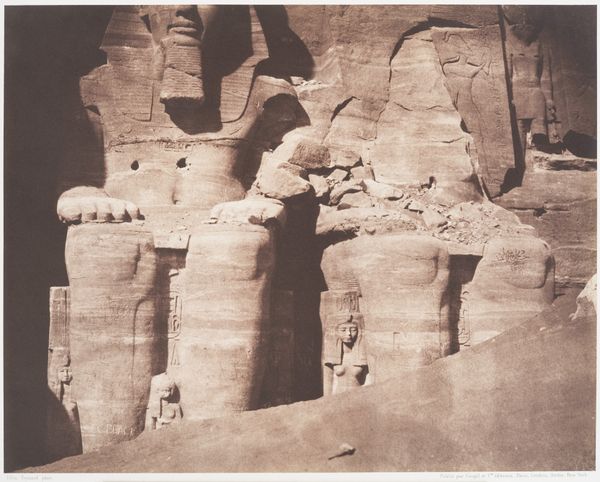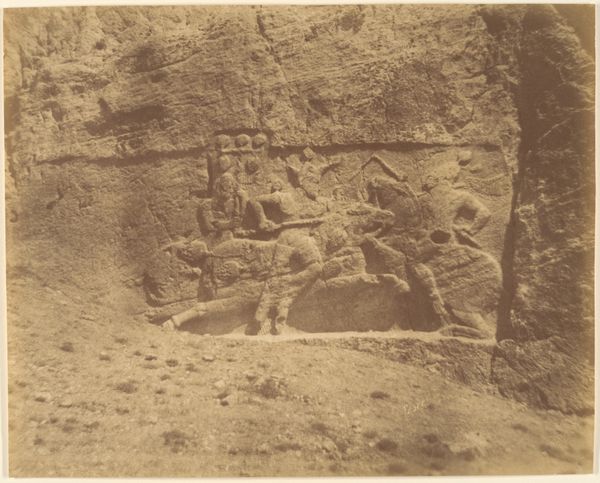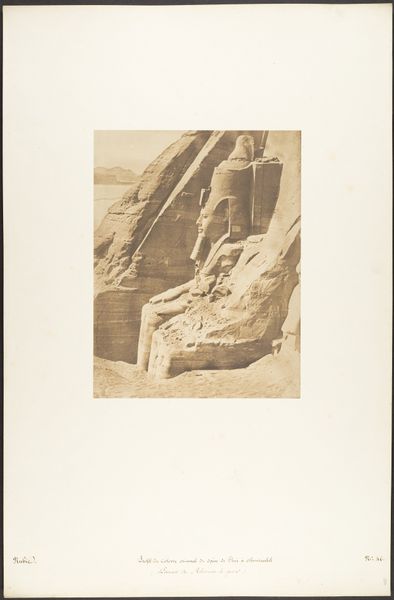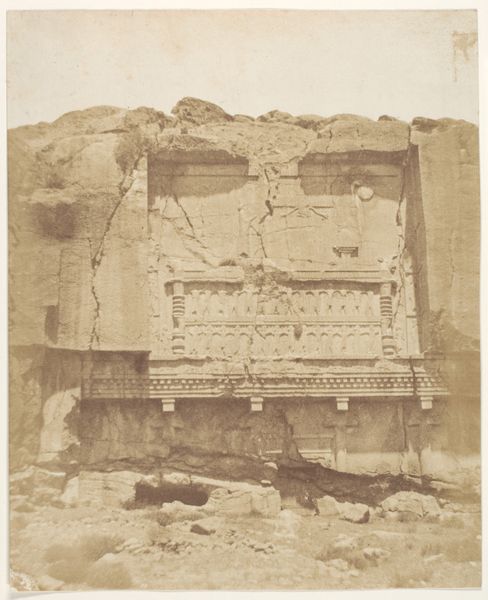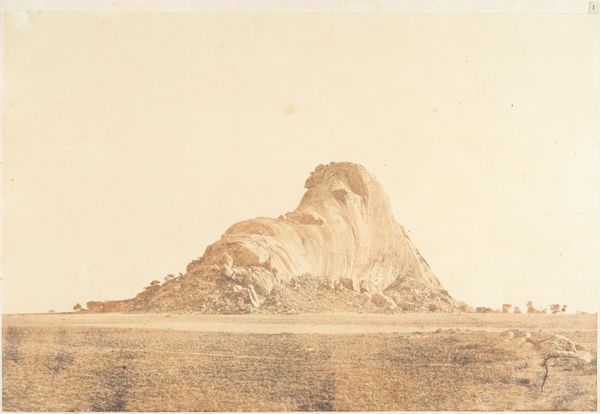
photography
#
landscape
#
ancient-egyptian-art
#
photography
#
ancient-mediterranean
Dimensions: height 221 mm, width 279 mm
Copyright: Rijks Museum: Open Domain
Curator: Before us, we have a photograph titled "Tempel van Abu Simbel," captured by Maison Bonfils between 1870 and 1898. What’s your initial impression? Editor: Monumental. The scale is awe-inspiring. The figures carved into the rock face evoke an ageless, enduring power, almost daring anyone to question their authority. Curator: It's certainly designed to impress! Bonfils’ photograph offers a glimpse into a period of intense European interest in Egypt. These photographic expeditions served a crucial role in shaping Western perceptions of ancient Egypt, popularizing its monuments, and also becoming valuable records that fueled archaeological excavations and scholarly research. Editor: Those colossal statues! They're guardians, really, aren’t they? And notice the smaller figures flanking the entrance. Visually, they remind me of power—the large dominating the smaller, the temple commanding the landscape. The psychological impact is that of dominance, I’d say. Curator: Yes, Ramses II, who commissioned Abu Simbel, aimed for exactly that. He was a master of propaganda! He built on an enormous scale to assert his divine right and consolidate his power, ensuring he would be remembered throughout history. It's all deeply entwined with imperial ambitions and cultural projection. Editor: The very act of carving these images into stone—permanent, unyielding—reinforces that ambition. Stone equals eternity in the symbolic language. They’re speaking not just to their contemporaries, but to all future generations. Look at those weathered surfaces; the story is etched right onto the stone. Curator: Absolutely, and Bonfils’ photography plays into this. These images were consumed by European audiences eager to connect with this sense of history. It fueled imaginations and shaped understandings – not always accurately, of course – of this fascinating world. Photography played a part in creating a specific version of it for popular consumption. Editor: It makes you consider the Western gaze, doesn't it? How this monumental feat of ancient engineering was reduced, in a way, into a packaged commodity through these photographs. Curator: Precisely, and these discussions are vital for interpreting the many roles images play in shaping how we connect with historical narratives. Editor: I find it so powerful to think of the endurance and the lasting symbolism that monuments, like this photograph of Abu Simbel, possess. Curator: Agreed. This photo makes us consider power, history, and representation all at once, something that I feel is essential to understanding how historical contexts evolve.
Comments
No comments
Be the first to comment and join the conversation on the ultimate creative platform.
